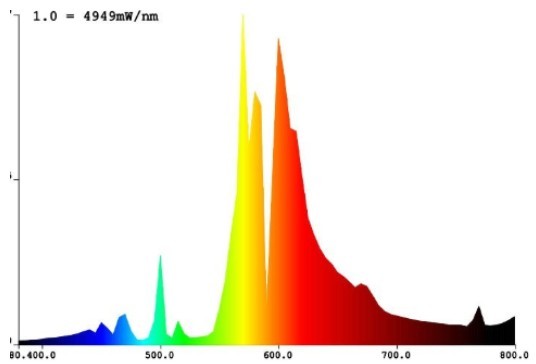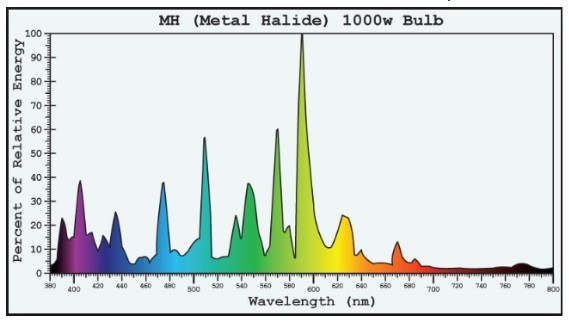How to compare different grow lighting technologies
10/2018
I estimate it will take around 6-7 minutes to read this article, so, not to waste time, let's start from the end - it is not possible. This is problematic and I want to take a moment to explain why. |
Since we are dealing with agronomic lighting, not only can there not be a direct comparison between technologies, in most cases it is impossible to make a direct comparison between two LED lighting fixtures from different manufacturers.There is a good chance that if you take two LED grow lights from two different manufacturers, even though they are both 100W and are placed in an identical growing environment, the results will be different at the end of the growing Regular lighting, for spaces meant for human activities, is supposed to light the space. True, there are guidelines and recommendations on how to do that, however, in the end, the purpose is to create light in a dark place so people can do certain activities. | It is important to remember that the basic goal of agronomic lighting is to make plants grow.In fact, the lighting needs to produce an accurate type of energy at a sufficient level, suitable for the growing environment which will, in the end, translate to growing plants. Lighting the space is not the major factor here. The major factor is getting each plant to its full potential, which matches the business model and growth plan of the grower. Lighting a space or supplying energy for biological production are two very different things. I hope that I have managed to get this point over, as it is critical to open-minded thinking. Understanding the spectrum, its composition, the ratio between wave lengths, combination of power, uniformity and light direction and the effect of all these on the success of plant development through all the different growth cycle stages are still areas full of question marks. There is a great learning curve and the knowledge is accumulating, but these are still difficult questions to answer. |
The advantage of LED lighting in control and "design" of the spectrum is part of the technological challenge in front of us. Now that it is possible to do more, in a better way, we have to learn how.In the past, there was a rough division of spectrum by technology. |
The spectrum of an HPS lamp looks like this:
| And this is an example of the spectrum of a metal-halide grow lamp:
|
There won't be a big change is spectrum whether you choose higher wattage or even a different manufacturer. Because of this, in the past we would talk about agronomic light using lumens or lux levels and color temperature in Kelvins. These are neither correct nor relevant measures when talking about plants. Since there was little difference in spectrums between the different solutions, it was an easy way to measure light output while comparing different lighting solutions from the same technology with similar spectrums. On the other hand, here is a selection of spectrums obtainable from the same LED fixture. We just define them according to the grower's needs: 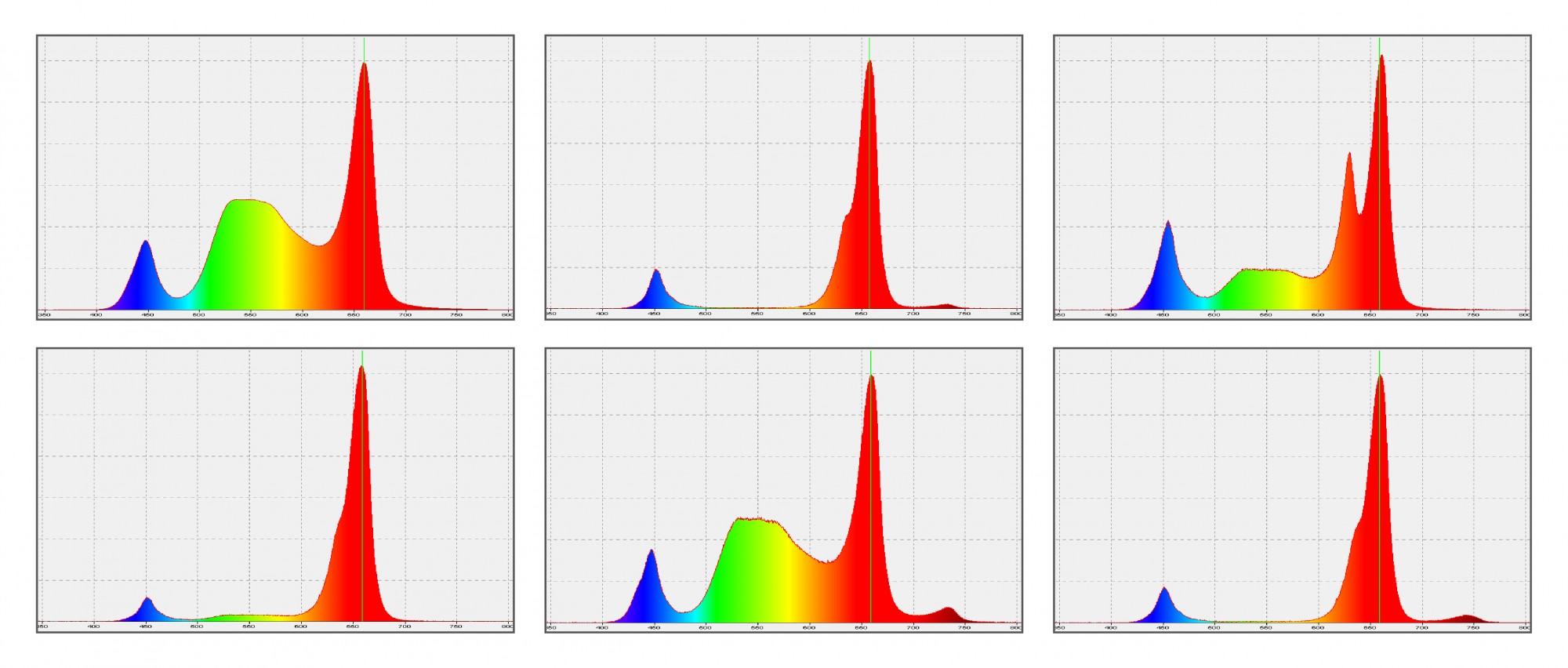 And this is without including the infinite possibilities when using a dynamic spectrum controlled by the grower. So how can we compare a 600W HPS lamp to a LED lamp of XXX watts? |
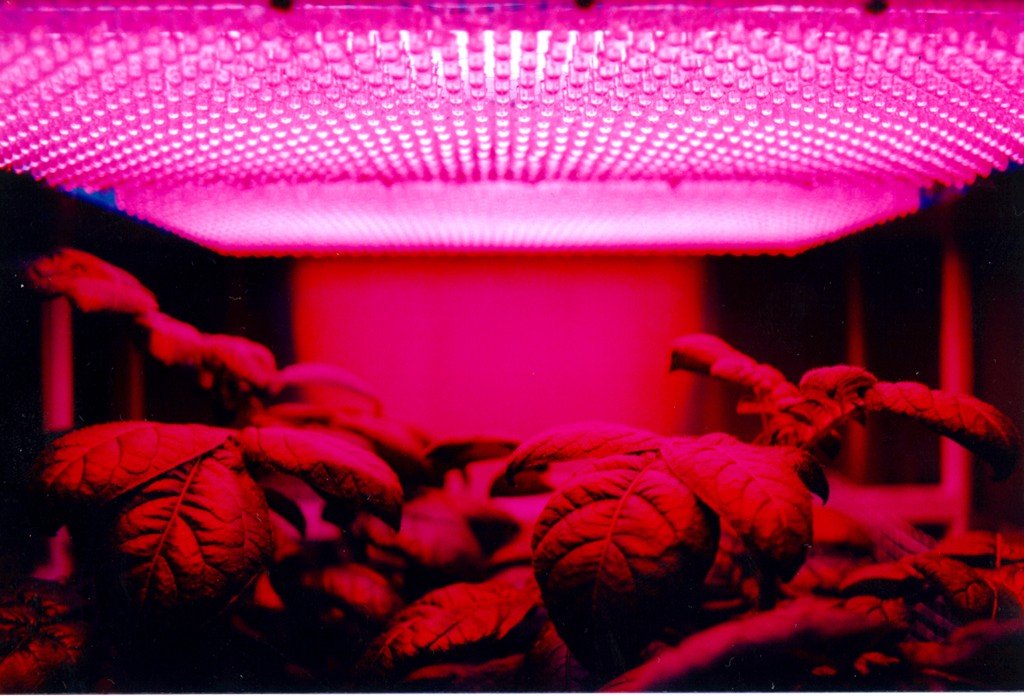 | 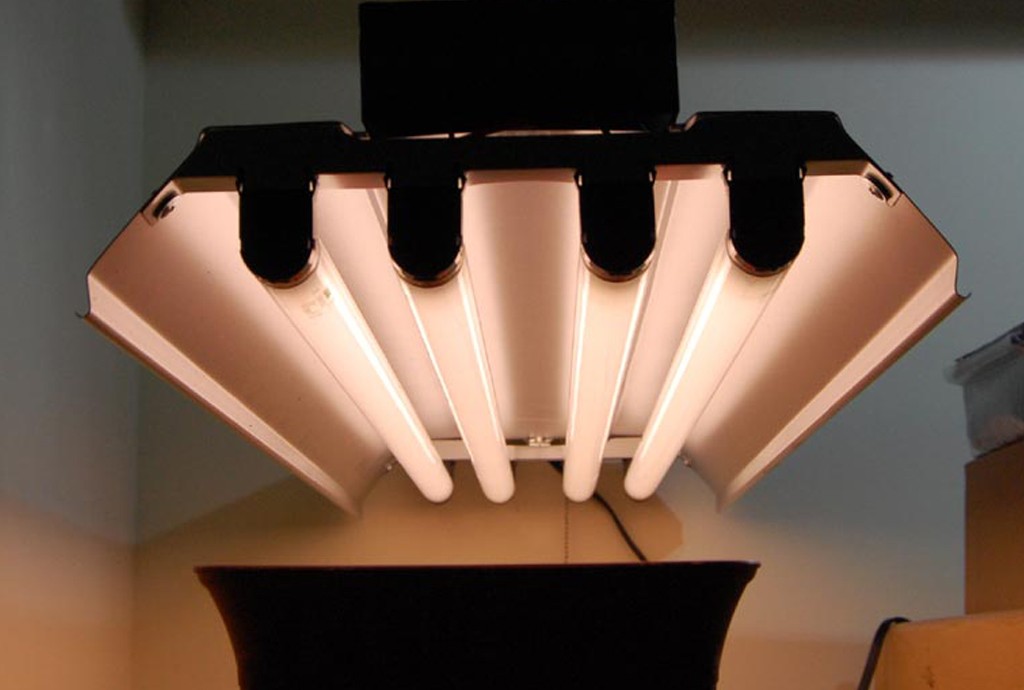 |
This is a problem. When we choose a metal-halide or HPS lamp, we are relating to the growth stage, growing area and distance from the plant. When choosing LED lighting, we are relating to spectrum, efficacy, photometry, plant type, growth environment, growth stage, growing method, expected results, type of installation, digital control needs, dimming needs, geographical placement and more. In the past, all these exacting questions were not relevant. Today these parameters allow us professional, successful results. So, not only is it impossible to compare technologies, it is impossible to compare different solutions within the same LED technology because each manufacturer defines his spectrum to his idea of what works best or sells the most. All this and I've only talked about spectrums. |
Another thing that doesn't allow comparison between technologies is the available range of strengths, dimming possibilities and precision light control.In the past we had HPS lights in 150, 250, 400 , 600 or 1000W. If 400W wasn't enough, our only option was to to 600W. Today we have nearly unlimited intensity possibilities. Also the ability to dim an LED light is significantly better and easier than dimming HPS lights, thus today the right way is not to look at the wattage of the light fixture as a final index but rather as the top level. The index we'll look at is the intensity of light in PPFD, at the plant canopy and dim the lights appropriately until we reach the level we want. You thought we were done? Actually, no. Photometry/light angle In LED are more variable and exact and allow us to maximize light distribution to relevant areas.It is possible for a 100W LED lighting fixture set with the correct light distribution to be more effective than a 250W or even 400W HPS light with limited photometry. If it's not clear by now, the main message of the article is that it's impossible and it is an error to try a simple comparison between technologies. The solution needs to be planned and be selected according to desired results, type of plant, growth stage, sort of installation, light efficacy, budget etc., and not by "what will replace a 1000W HPS light". | So why, despite all this, do suppliers (sometimes even me), answer the question of what will replace a 400W HPS or metal-halide light with a serious reply? We use estimations and work assumptions. A customer with this sort of question usually grows medicinal plants. The growing area is proportional to the lights he is currently using (400, 600 or 1000W HPS). If he asks to replace metal-halide it is usually at the vegetative stage and if HPS, at the flowering stage. So I know to offer him my solution with the correct spectrum for the growing stage, a suitable distribution angle for the space, intensity suitable for the stage and distance from the fixture to the plant. The short answer to what I supply to replace a 600W HPS, is a 240W LED. Now just to complicate things a bit more. A year ago my solution was a 330W LED light, but the technology is advancing and today we get more light energy per watt which, in effect, lowers the electricity needs for the system. I don't recommend contacting a lighting supplier with a request for to match the effect of another product, rather to contact him with a definition of the required result and ask for a lighting plan based solution. Each supplier from any technology will offer his solution and these can then be compared. |
I warmly recommend studying as much as possible about lighting as this is so important in the ecosystems that you want to create in your growing area and also to your budget.Enjoy your growing and take it easy. If you feel you still don't know enough, please feel free to contact me and ask any question.I wish us all good light |

